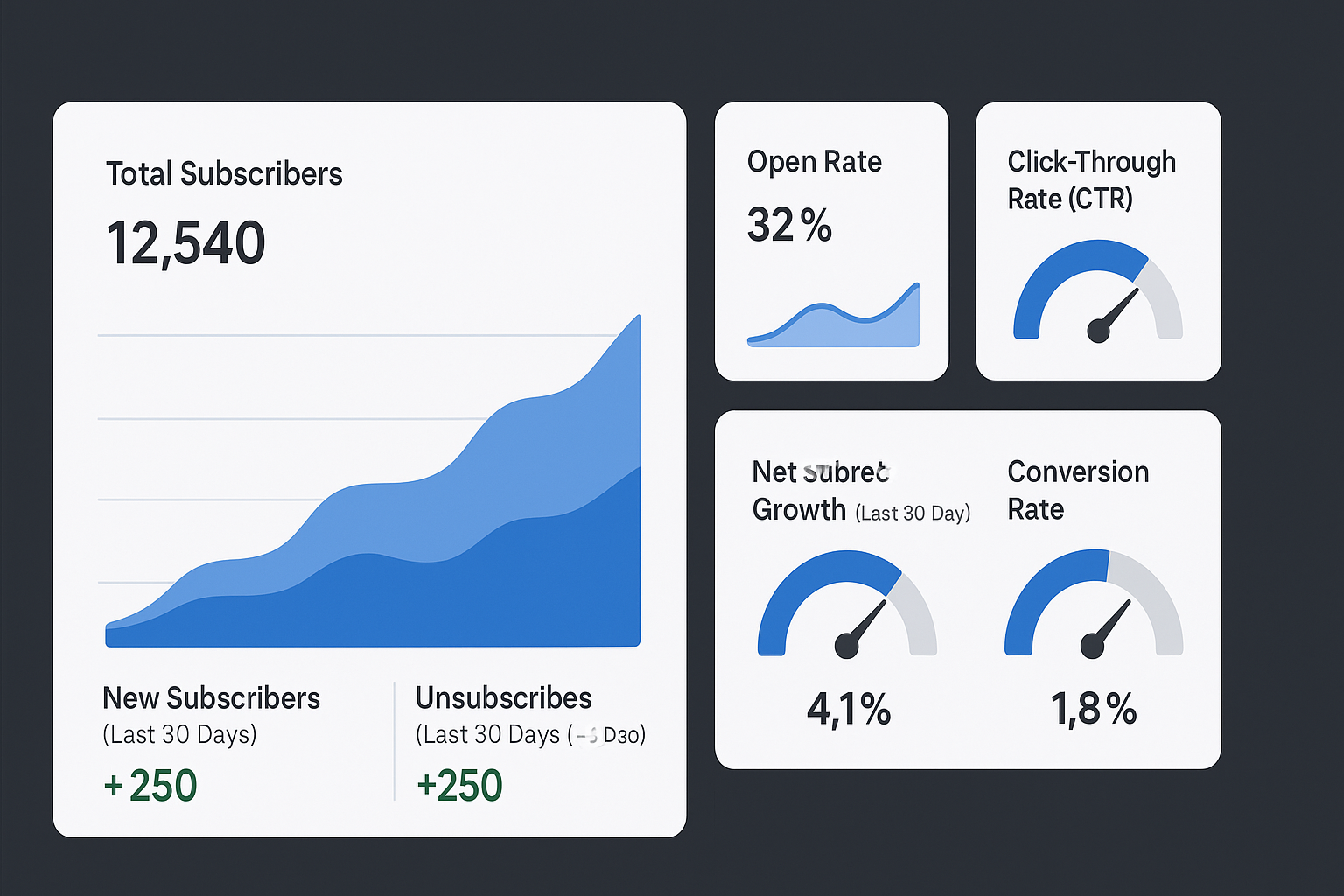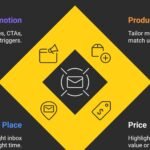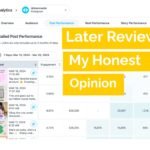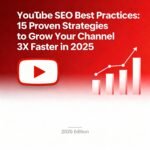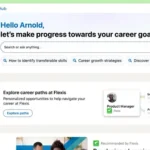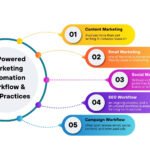In a world dominated by algorithm-driven feeds, there’s one channel marketers still own—the newsletter.
If you’ve ever felt at the mercy of social media’s ever-changing algorithms, you’re not alone. Posts get buried. Ads get skipped. But there’s one channel that still cuts through the noise and lands directly in your audience’s hands—the email newsletter.
So, what is newsletter in digital marketing? It’s more than just a batch of emails. It’s a strategic communication tool that gives brands a direct line to their subscriber list—unfiltered, uninterrupted, and undeniably powerful. Newsletters have evolved from simple updates to dynamic engines of brand communication, audience engagement, and customer loyalty.
And the numbers speak volumes:
- Over 4.5 billion people use email daily (OptinMonster, 2025). That’s not just reach—that’s real estate in your audience’s inbox.
- Email marketing still delivers one of the highest ROIs in digital—up to $44 for every $1 spent.
- Unlike rented channels like Instagram or TikTok, email is owned media. You control the narrative, timing, and audience.
Whether you’re launching a new product, sharing valuable content, or nurturing leads, a newsletter keeps your message front and center—without begging for likes or battling a feed algorithm. It’s not just an afterthought in your marketing stack; it’s a core pillar of your digital marketing strategy.
Welcome to your definitive guide to newsletters—what they are, why they matter, and how they can elevate your entire brand ecosystem.
What Is a Newsletter in Digital Marketing?
Let’s clear the noise: What is newsletter in digital marketing? It’s not just a weekly “Hey, we exist” email. It’s a carefully crafted message sent to your subscriber list with a clear purpose—to inform, engage, and convert.
A newsletter is a recurring email campaign used by businesses, creators, and brands to stay in touch with their audience. It typically includes a mix of updates, curated content, educational resources, exclusive promotions, and CTAs (calls to action) that guide the reader to take the next step—whether that’s reading a blog, registering for a webinar, or making a purchase.
Unlike one-off promotional emails, newsletters are consistent. They create rhythm, build familiarity, and foster brand loyalty. And here’s the beauty: it’s a form of owned media. You don’t have to pay for impressions, outsmart a content algorithm, or compete with a dozen other voices in a timeline. You already have permission to show up directly in your audience’s inbox.
Let’s break that down a little more:
- Format: Newsletters can be text-heavy, image-rich, or minimalist—what matters is clarity and value.
- Frequency: Weekly, bi-weekly, or monthly—the cadence should match your digital marketing strategy.
- Tone: Conversational? Corporate? Curated? It depends on your brand identity and your audience’s expectations.
- Goal: From audience engagement to lead generation and customer retention, newsletters serve multiple functions depending on how you design them.
In short, a newsletter isn’t just a tool—it’s a relationship engine. When done right, it’s where your brand communication becomes personal, your content marketing meets conversion, and your voice becomes a welcomed presence in someone’s inbox.
And in a marketing landscape where attention is the most valuable currency, that kind of access is pure gold.
Why Marketers Still Rely on Newsletters—5 Key Advantages
In 2025, with AI curating feeds and social media becoming more “pay-to-play” than ever, newsletters offer what most platforms can’t: control, connection, and conversions. Let’s break down why what is newsletter in digital marketing isn’t just a definition—it’s a growth strategy.
1. Direct Access to Your Audience—No Algorithms, No Guesswork
With newsletters, you’re not renting reach—you’re owning it. Once someone joins your subscriber list, you’ve got direct access to their inbox. No filters. No throttled visibility.
That’s massive, considering organic Facebook reach is hovering around 2.2%.
2. Builds Long-Term Brand Loyalty and Trust
Great newsletters don’t scream “Buy Now!”—they whisper “Here’s something valuable.” Whether it’s expert advice, how-to guides, or curated insights, newsletters position your brand as a consistent, trustworthy voice.
And guess what? Consistency = credibility.
Brands that publish newsletters weekly are 41% more likely to be seen as industry authorities (Content Marketing Institute, 2024).
3. Insane ROI (Return on Investment)
If we’re talking cost-effectiveness, newsletters take the crown. No printing costs. No ad spend. Just targeted, measurable communication.
Stat to know: Email marketing has an average ROI of $44 for every $1 spent (EmailToolTester, 2025). That’s not marketing fluff—it’s measurable revenue.
From lead generation to conversion rate optimization, newsletters are lean, high-impact, and scale beautifully.
4. Hyper-Personalization That Drives Results
Modern email tools allow you to segment your audience by behavior, interests, purchase history, and more. That means your personalized emails can be ultra-targeted—boosting both engagement and click-through rates.
5. Integrates Seamlessly with the Rest of Your Marketing Stack
Your newsletter shouldn’t live in isolation—it’s a powerful bridge between your blog, landing pages, social content, and offers. Whether you’re promoting a webinar, amplifying SEO content, or running a flash sale, newsletters pull it all together.
Think of it as the glue in your digital marketing strategy—connecting platforms, reinforcing messaging, and guiding users toward key actions.
When you zoom out, it’s clear: newsletters are the rare mix of low-cost, high-trust, and high-impact. They give you the power to educate, inspire, and convert—on your terms.
What Should a Good Newsletter Include?
So now you understand the power behind the question: What is newsletter in digital marketing? But knowing why it matters is only half the game—what you put inside it determines whether it thrives or tanks.
A great newsletter doesn’t just fill space in someone’s inbox. It delivers relevance, provides value, and drives action. Let’s get into the must-haves of a modern, results-driven email newsletter:
1. Educational Content & How-To Guides
People subscribe because they want something—answers, insights, or shortcuts to success. Providing industry tips, tutorials, or expert breakdowns positions your brand as the go-to resource.
Example: “5 Mistakes to Avoid in Your First Google Ads Campaign”
- Company News & Product Updates
Your newsletter is a direct communication channel—keep your audience in the loop. Share what’s new, what’s next, and what’s changing.
Example: Announcing a feature release, new partnership, or upcoming event.
Tip: Use a “From the Founder” section for a more human voice.
3. Exclusive Offers or Promotions
Want to drive sales? Make your newsletter the VIP access point for deals. Offering subscriber-only discounts or early access can boost both click-through rates and conversion rate.
Example: “Subscribers Get 20% Off—This Week Only”
Stat: Emails with exclusive offers see 31% higher conversion on average (HubSpot, 2025).
4. Customer Spotlights or Testimonials
Social proof builds credibility. Feature stories from real users or clients—case studies, short reviews, or before/after success stories. They bring authenticity to your brand voice.
Example: “How Tolu Used Our CRM to Triple Her Leads in 90 Days”
5. Curated Industry Insights
Your readers are busy. Help them stay sharp by sharing top news, trending tools, or must-read articles—all curated through your brand lens. Think of it as editorial meets utility.
Example: “3 SEO Updates You Need to Know This Month”
6. Personalized Recommendations
With the help of segmentation, you can tailor product suggestions, content picks, or resources based on a subscriber’s behavior or preferences.
Example: “Based on your last read, here’s what we think you’ll love next…”
Stat: Personalized emails can increase CTR by 139%.
7. Surveys, Polls & Feedback Loops
Your audience wants to be heard. Use your newsletter to ask questions, run polls, and collect insights. It creates two-way engagement and shows that you value their opinion.
Example: “What Content Do You Want Next? Vote Here.”
The most effective newsletters are designed with the subscriber’s experience in mind. Every section should either inform, delight, or inspire action. When every element is intentional, the results speak for themselves: higher open rates, stronger click-throughs, and deeper loyalty.
How to Build and Grow a Newsletter That Works
Knowing what is newsletter in digital marketing is step one. Step two? Creating one that people actually want to open—and keep opening. This section breaks down exactly how to build a high-performing newsletter from scratch and scale it into a lead-generating, trust-building machine.
1. Start With a Magnetic Lead Magnet
People don’t just hand over their email addresses for fun. You need to offer something valuable in exchange. A lead magnet is your trade—a reason to subscribe.
Examples:
- Free templates
- Exclusive eBooks
- Discount codes
- Webinars or toolkits
Stat: 50% of marketers say lead magnets are the top method for list building (HubSpot, 2025).
2. Create an Irresistible Opt-In Form
Your opt-in form should be clear, compelling, and conversion-focused. Place it strategically—on landing pages, blog posts, pop-ups, and your site’s footer.
Best practices:
- Use action-oriented CTA text (“Get My Free Guide”)
- Keep the form short (email + name is often enough)
- Emphasize the value, not just the subscription
3. Design a Welcome Email That Delivers
First impressions matter. Your welcome email should set expectations, introduce your brand, and deliver whatever you promised.
Tip: Automate a 3-part welcome series to ease subscribers into your ecosystem.
4. Segment Your Audience for Relevance
Not all subscribers are created equal. Segmentation lets you target by demographics, purchase behavior, location, or interests—making every email feel personal.
Fact: Marketers who use segmented campaigns report 760% higher revenue (Campaign Monitor, 2025).
5. Establish a Consistent Sending Schedule
You don’t need to be in your audience’s inbox every day—but you do need to be consistent. Whether it’s weekly or monthly, consistency builds familiarity—and familiarity builds trust.
Bonus: Track when your audience is most active. Test different send times to optimize open rates.
6. Re-Engage or Prune Dormant Subscribers
Every list has dead weight. Don’t be afraid to run re-engagement campaigns or clean out subscribers who haven’t opened your emails in 3–6 months. This keeps your list healthy and improves deliverability.
Tip: A high-quality list is better than a large one with low engagement.
7. Monitor and Measure What Matters
If you can’t measure it, you can’t grow it. Focus on metrics like:
- Open Rate
- Click-Through Rate (CTR)
- Conversion Rate
- Bounce Rate
- Unsubscribe Rate
Use these insights to tweak subject lines, content, and CTAs.
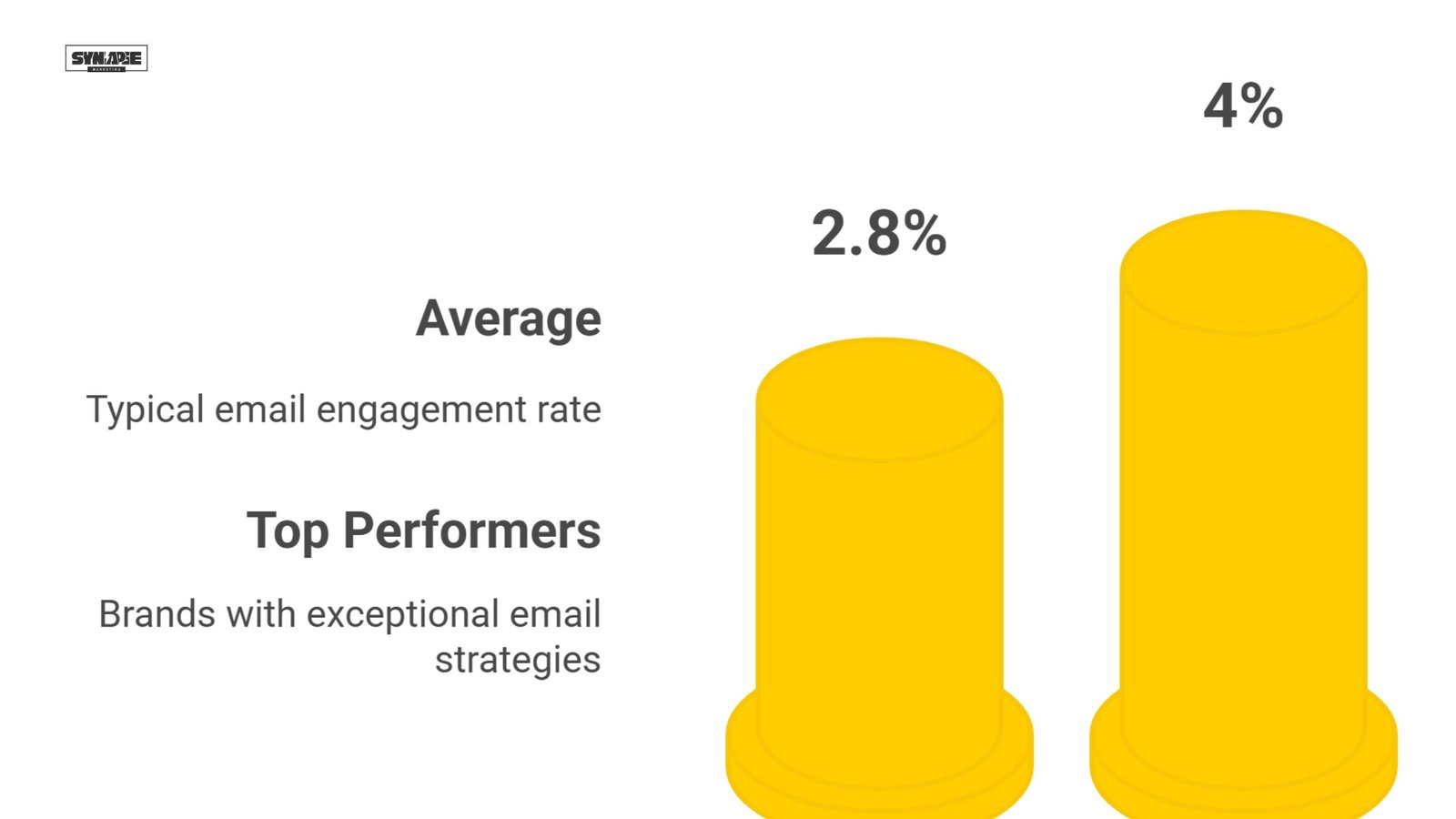
Stat: The average email click-through rate in 2025 is 2.8%, but top-performing brands see 4%+.
At its core, what is newsletter in digital marketing? It’s your chance to own your pipeline. A smart strategy turns passive readers into brand advocates, leads into buyers, and subscribers into loyal communities.
7 Best Practices for Newsletter Marketing in 2025
You’ve got the tools, the strategy, and the subscriber list. But the game has evolved, and attention is harder to earn than ever. If you want your newsletter to convert, engage, and retain, you’ll need to align with what actually works today.
Here are the newsletter marketing best practices to swear by in 2025:
1. Write Like a Human—Not a Brand Bot
People don’t want to read corporate fluff. They want emails that feel personal, conversational, and relatable. Use natural language, add humor where appropriate, and speak like you know your reader.
2. Put the Subscriber First—Always
Before hitting send, ask: “What’s in it for them?” If your newsletter reads like a sales pitch, it’ll be ignored or deleted. If it’s valuable, insightful, or entertaining—it gets opened again and again.
Use the 80/20 Rule: 80% value, 20% promotion.
3. Optimize for Mobile (Non-Negotiable)
Over 60% of all emails are opened on mobile. That means your formatting, buttons, subject lines, and images must be mobile-friendly.
Tips:
- Use a single-column layout
- Keep subject lines under 45 characters
- Ensure CTA buttons are thumb-friendly
4. A/B Test Relentlessly
You’re not guessing—you’re growing. A/B testing lets you experiment with:
- Subject lines
- Send times
- CTA button text
- Email length
- Visuals or GIFs
Pro insight: Even a 1% uplift in open or click rate can mean hundreds (or thousands) more conversions over time.
5. Use Data to Drive Every Decision
Track what works, and double down on it. Dive into your analytics to understand:
- Which topics drive the most clicks
- What day and time your audience engages most
- Which segments respond to specific types of content
Bonus stat: Top-performing marketers check newsletter analytics weekly or more (Litmus, 2025).
6. Stay Compliant & Respect Privacy
2025 isn’t the wild west. With regulations like GDPR, CAN-SPAM, and evolving Nigerian data protection laws, it’s critical to:
- Get clear consent
- Offer easy opt-outs
- Be transparent about what data you collect
Trust = better deliverability and long-term loyalty.
7. Build for Long-Term Engagement, Not Quick Wins
The goal isn’t just opens—it’s relationships. Instead of chasing one-time conversions, nurture your readers with a consistent mix of value, transparency, and storytelling.
📬 Think beyond the next click. Think about brand memory, emotional connection, and staying power.
Your newsletter is more than a marketing tool—it’s a relationship engine. And in 2025, the most successful brands aren’t just sending emails. They’re building trust, delivering consistent value, and turning readers into superfans.
Real Examples of Effective Newsletters And Why They Work
You know the theory. Now, let’s look at how top brands are executing newsletters that not only get opened—but get read, clicked, and shared.
These examples demonstrate what “newsletter in digital marketing” really looks like when done right in 2025.
1. Morning Brew – The Master of Format + Tone
What They Do Right:
- Punchy subject lines that hook curiosity
- Skimmable, scannable layout
- Friendly, conversational tone that makes news fun
Why It Works:
Morning Brew has mastered audience-fit. They know exactly who their reader is (young professionals) and speak directly to that vibe.
Takeaway for You:
Nail your tone. Whether it’s fun, serious, or niche-specific—own your brand voice.
2. Notion’s Product Updates – The Gold Standard in Product Education
What They Do Right:
- Short but powerful product explainers
- Clean design with embedded visuals and gifs
- Clear CTAs that guide users back into the product
Why It Works:
Notion uses its newsletter not just for promotion, but onboarding and product mastery. This drives retention and reduces churn.
Takeaway for You:
Use newsletters to educate—not just sell.
3. Really Good Emails – The Design-Inspiration Powerhouse
What They Do Right:
- Showcases the best email designs from around the web
- Uses email to talk about email—meta, but powerful
- Engages designers and marketers in a tight-knit niche
Why It Works:
They built a community around a very specific interest. And their newsletter delivers serious creative inspiration.
Takeaway for You:
Get niche. Serve a specific group better than anyone else.
4. Sephora – Ecommerce Done Right
What They Do Right:
- Personalized product recommendations
- Clear, visually-driven layout
- Strong CTAs (“Buy Now,” “Try in Store”)
Why It Works:
Sephora leverages purchase data and browsing behavior to tailor newsletters that feel like they were designed for one person.
Takeaway for You:
Use data to personalize every touchpoint.
5. James Clear (Author) – Consistency & Simplicity
What He Does Right:
- Sends a short “3–2–1” newsletter every Thursday:
- 3 ideas
- 2 quotes
- 1 question
- Clean, text-only format—no fluff
Why It Works:
The formula builds trust and anticipation. People know what to expect and when to expect it.
Takeaway for You:
Create a predictable format your audience can grow to love.
These aren’t unicorns—they’re strategic, repeatable newsletter models that any business can learn from.
Whether you’re a solo creator or B2B SaaS brand, the secret isn’t volume. It’s clarity, consistency, and value.
And now you know how to deliver all three.
Conclusion: Your Newsletter Isn’t Just an Email—It’s an Asset
Let’s rewind for a second. We started with a simple question:
What is a newsletter in digital marketing?
Now you know—it’s not just a monthly message or a one-off blast. It’s a direct, ownable, high-intent communication channel that builds relationships, educates your audience, and grows your business with zero reliance on algorithms.
And in 2025, when privacy is sacred, attention is scarce, and platforms keep moving the goalpost, newsletters are one of the few marketing tools where you control the narrative, the audience, and the outcome.
What You Should Do Next
Audit your current email list.
Are your subscribers engaged? Are you segmenting? Is your list healthy?
Define your value promise.
Why should someone open your email? What makes your content unmissable?
Commit to consistency.
Weekly, bi-weekly, monthly—just pick a rhythm and show up. Every time.
Focus on the relationship, not just the sale.
This is a slow-burn channel that compounds over time. Treat your subscribers like insiders, not targets.
In a world chasing virality, newsletters are your slow but certain power play.
They’re where trust lives. Where brand memory gets built.
And in an increasingly cookieless, ad-fatigued digital world, they might just be your best-performing channel.
Want More?
Check out our full guide on email marketing strategies for automation tips, content frameworks, and advanced segmentation strategies that turn your newsletter into your secret growth weapon.
Frequently Asked Questions on Newsletter in Digital Marketing
What is a newsletter in digital marketing?
A newsletter in digital marketing is a recurring email sent to subscribers to share updates, insights, or promotions that foster engagement and build brand loyalty.
Why are newsletters still relevant in 2025?
With over 4.5 billion daily email users, newsletters offer a direct, algorithm-free way to build trust and drive conversions in a fragmented digital space.
How often should I send a newsletter?
Weekly or bi-weekly is ideal for most brands. The key is consistency—pick a cadence your audience can rely on.
What makes a newsletter successful?
Strong subject lines, clear value, engaging content, CTAs, and personalization all contribute to a high-performing newsletter.
What’s the difference between a newsletter and promotional email?
Newsletters are ongoing, content-driven communication tools, while promotional emails are typically one-off campaigns aimed at driving immediate action.


